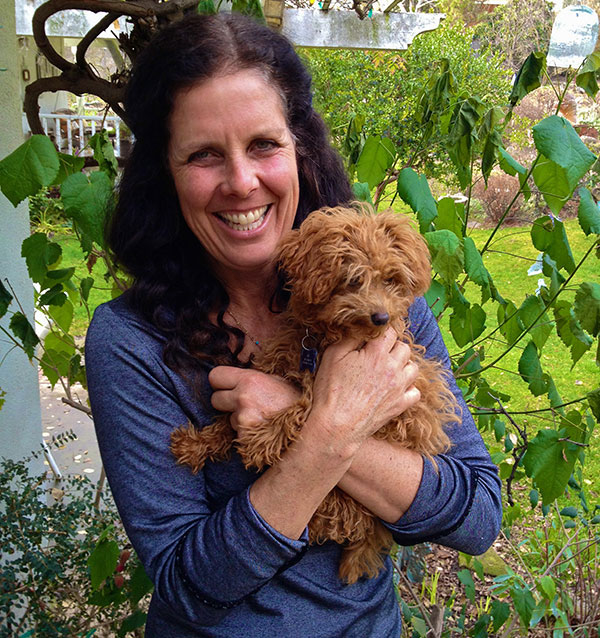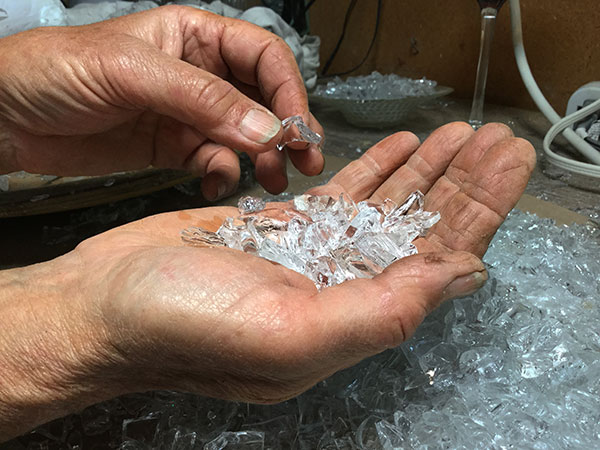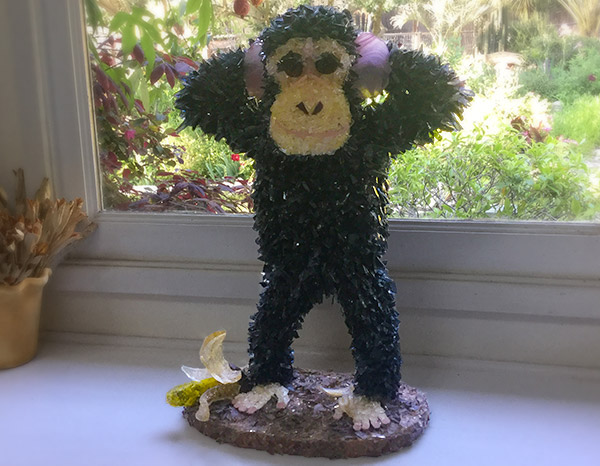If someone else can do it, build it, create it, why can’t I?
In 1956, Long Island, New York, Jennifer Stang was born a “little dog in a big body”. With her youthful heightened sensibilities and sensitivity to the world, she moved to West Los Angeles with family and began her exploration and interactions in the world as an artist. She had a natural eye for the potential use of found objects, specifically how to incorporate them into her art; at an early age she would walk the streets with a shoe box to collect unusual discarded specimens. After visiting Watts Towers in Los Angeles, Jennifer was enthralled and inspired by the magnitude of Simon Rodia’s work and how he integrated his ‘detritus’ into towering works of art.
Stemming from an inquisitive attitude –and a bit of moxie- Jennifer’s motto became, “if someone else can do it, build it, create it, why can’t I?” She began expressing and developing her creativity through all different mediums. If she did not have money to buy furniture, she would use scrap wood and build it; if a clock stopped ticking and it was too expensive to get repaired, she dismantled it and fixed it. Jen began painting, made her own tile and mosaics, sewed and quilted, did construction on her home, created concrete Zen sculptures, etc. She developed her knack for recycling and turned an unusable spa, barbells, tree stumps, and more into natural and realistic boulders for the garden. Later, with a love for life and nature, she became a seasoned landscape artist in the San Luis Obispo and Los Angeles, California areas- using her recognition and deep understanding of textures, form and color in her landscape themes, while integrating clients’ personal objects into the final landscape.
Jen held fast to her insistence never to take an art class. Although she understood the helpfulness of learning traditional rules and theories, she did not want her personal voice and vision to be mainstreamed, snuffed out, caught in the matrix of conventional art methods. And from this fast-held belief system, Jennifer began making shattered glass sculptures.
Jennifer combines her love of animals and nature with her intimacy with glass and color.
Early signs of an almost spiritual relationship with glass emerged when, as a little girl, she beheld the magnificence of her aunt’s enormous, glistening chandelier. In her sculptures Jennifer combines her love of animals and nature with her intimacy with glass and color. Each sculpture is meticulously made. After selecting a subject, she studies its essence. Rather than make an exact replication, Jennifer’s intention is to capture the feeling and personality of her subject with glass as the medium. To begin: she carves the form out of wood, secures it with metal straps, then starts the process of enrobing the base sculpture with carefully selected pieces of glass. She jokes that a hammer is her precision tool; yet in the random broken pieces of the glass she finds inspiration.
Each sculpture has soul, an alluring quality.
The finished product confounds the senses. Each sculpture has soul, an alluring quality. People reach to touch the sweet animals, then retract because they are made with formidable glass. Like the yin and yang of life, these art forms symbolize a deep-seated sadness in the artist’s heart that beneath the appeal of people and the world there is danger. Jennifer presents the face of her gentleness, of her connection with innocence in her pieces and knows that a sculpture is complete when she places her hand gently on its radiant head and feels life in it.



